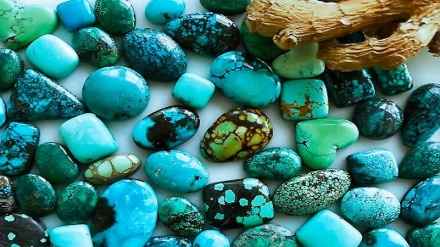Iranian Market (34)
Welcome to another episode of the Iranian Market. The Islamic Republic of Iran, having about four thousand hectares of land under cultivation of decorative flowers and plants, has a considerable share in the global market of such goods.
In this program, we’re going to discuss the Islamic Republic of Iran’s decorative flowers and plants.
One of the beneficial businesses is trading of decorative flowers and plants. The financial turnover of this industry has grown in the past decades. According to the figures of the International Association of Horticultural Producers (AIPH), in 1950s the trade value of flowers and plants in global markets was about three billion dollars. This figure increased to about one hundred billion dollars in 2010.
It is said that currently the financial turnover of this business is more than 150 billion dollars. Because of the vast profits gained from this industry, scores of countries in different regions of the world are busy planting decorative flowers and plants.
The history of planting decorative flowers as a beneficial industry dates back to late 18th century. At that time, some European countries like England, collected different types of flowers from around the world and by setting up botanical gardens and vast greenhouses started keeping and planting these flowers and plants. After making preparations to visit these greenhouses and gardens and the public enthusiasm for this, the traders started expanding this business and nowadays this trade has turned into a lucrative industry across the world.
In Islamic Republic of Iran, the history of planting and growing decorative flowers and plants dates back to the ancient times. Ancient Iranians used to decorate their green areas with decorative flowers and plants. It’s interesting to note that lotus flower symbolizes sacredness in the culture of very old Iranians. This is evident in the designs of the Persepolis monument in Fars Province and the remaining walls of Apadana palace in Shush which have this flower carved on them.
The popularity of old beautiful gardens of Iran in different historical eras along with the art of designing stems partly from the beauty of flowers and plants.
In addition to architecture, in other Iranian arts and handicrafts like Iranian hand-woven carpets the designs of flowers and plants are used and have gained a bold status. In Farsi literature flowers and plants have been a source of inspiration for poets. Iranian poets, being inspired by the name of some flowers like daffodil, rose, jasmine, tulip, and puppy, have expressed words like chastity, innocence, sacrifice, love, friendship and martyrdom which pertain to these flowers.
Most people recognize the month of May as the most appropriate month for touring Iran, specially to the city of Shiraz where the scent of citrus aurantium is felt through the streets of this beautiful city. In the month of May, many plains across Iran are filled with colorful flowers which look like a beautiful picture.
Most of Iran’s greenhouses are in the cities of Mahallat and Khomein. Iran’s western and central plains are also covered with puppy flowers.
Extracting juice and perfume from rose flowers in the cities of Kashan, Qamsar, and Meymand are among the tourist attractions of these cities. In addition to the beauty these flowers have provided in these cities, the efforts for planting these decorative flowers and plants have made the country’s trade boom.
The record history of economic producing of flowers in Iran dates back to less than a century ago. Iran, having different regions regarding the flora including different types of trees, shrubs, different types of decorative flowers,... is among the rich countries in the world.
Iran is home to decorative flowers including tulips, hyacinth, gladiola, cyclamen as well as fruit trees and shrubs. It is possible to plants and grow decorative flowers and plants in fresh air and protected conditions including in greenhouses. Decorative plants and flowers are categorized in four groups of cut-branch flowers, vase flowers, trees and bushes, and seasonal plants. These four types are planted and grown in both fresh air and greenhouses.
The oldest greenhouses of Iran are more than seventy years old. In the past, greenhouse keepers did the jobs of planting and growing plants and flowers just for fun and Iran met its need for decorative flowers from abroad until 1979. But after the victory of Islamic Revolution in 1979 and the ban on importing flowers, the production of flowers and plants started growing. Multiple rivers, varied climatic conditions, full sunshine and long days all provide better conditions for growing plants and flowers in Iran. Also the presence of professional workforce in Iran is one of the reasons why domestic and foreign investors are eager to invest in this field. Among the most important flowers exported mention can be made of gladioli, rose, anthuriums, tulips, daffodils, alstroemerias, and lilies.
In recent years, the most important export markets of decorative flowers and plants include, Iraq, Russia, Tajikistan, Kyrgyzstan, Kazakhstan, Turkmenistan, Armenia, Moldavia, Uzbekistan, Georgia, Belarus and Ukraine.
AS/RM/SS


